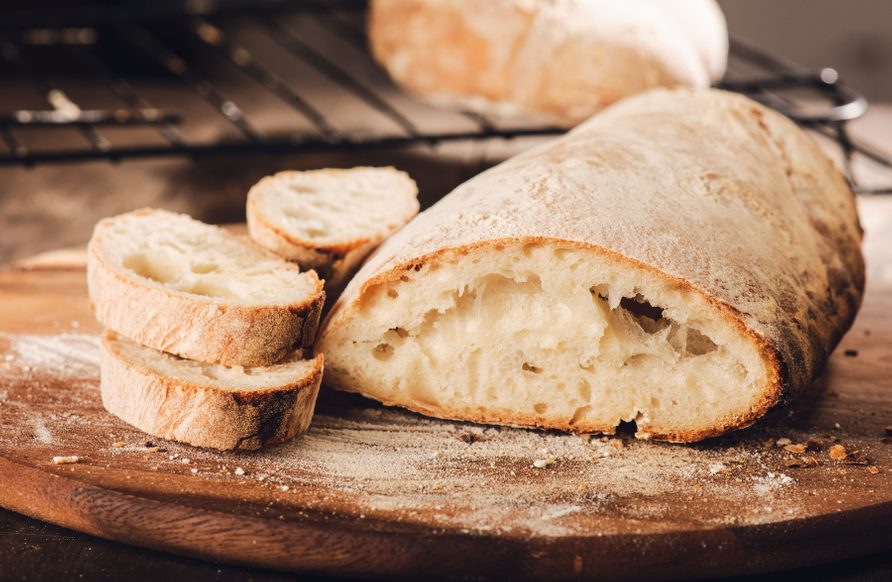Heart-Healthy Sourdough Bread
Instead of commercial yeast, delicious sourdough bread is made with a ‘starter’, which uses the yeasts that occur naturally in the atmosphere and on flour. Despite the time needed to ‘grow’ the starter, it is not a difficult bread to make.

Ingredients
- 100 g white bread flour preferable unbleached
- 100 ml water
- 250 g white bread flour preferably unbleached
- 500 g white bread flour preferably unbleached
- 240 ml water
- 1 tsp salt
Portions:
Units:
|
Ingredients
Portions:
Units:
|
Instructions
- To make the starter, place the flour and tepid water in a bowl and stir together to make a sticky paste. Cover with a damp tea-towel (not plastic wrap) and leave on the kitchen bench for 2 days, dampening the tea-towel again as needed to keep it moist. If after 2 days the mixture looks bubbly and has a milky smell, you can proceed to the first ‘feed’. (It may take up to 4 days to reach this stage.) If there are patches of mould or the paste smells sour or bad, throw it away and begin again with a new batch of starter.
- To ‘feed’ the starter, stir 100 g flour and enough tepid water into the starter to make a soft, paste-like dough. Cover the bowl as before and leave for 24 hours. At this point the starter will look very active and bubbly. Stir well, then discard half the starter. Stir another 100 g flour and enough tepid water into the starter to make a soft, paste-like dough. Cover again and leave for 12 hours. If the starter looks very bubbly and lively, it is ready to use. If it seems only slightly bubbly, give it one more feed of 100 g flour and tepid water and wait 6 hours.
- To make the dough, place the flour and salt in a large bowl. Mix together and make a well in the centre. Weigh out 200 g of the starter into a separate bowl and mix it with the tepid water, then pour it into the well in the flour. Gradually work the flour into the liquid mixture to make a soft dough. You may need to add a little more water as you work if the dough feels dry or crumbly, or more flour if it sticks to your hands or the bowl.
- Turn the dough out onto a floured work surface and knead for about 10 minutes or until very pliable. Return it to the cleaned bowl, cover with a damp tea-towel and leave to rise in a warm place for 3–8 hours or until doubled in size. Rising time depends on the room temperature and on the strength of your starter. (A new starter will give a slower rise and less volume than one that is well established.)
- Turn out the risen dough onto a floured work surface and knock it back with your knuckles to its original size. Shape the dough into a ball and set it in a basket or colander lined with a heavily floured linen tea-towel. Cover with a damp tea-towel and leave to rise for 2–6 hours or until doubled in size.
- Towards the end of the rising time, preheat the oven to 220ºC. Invert the dough onto a large greased baking tray and make a single slash across the top of the loaf with a sharp knife. Bake for about 35 minutes or until the bread sounds hollow when removed from the tray and tapped on the base.
- Transfer the bread to a wire rack and leave to cool. It can be kept for up to 5 days, and is wonderful toasted.



